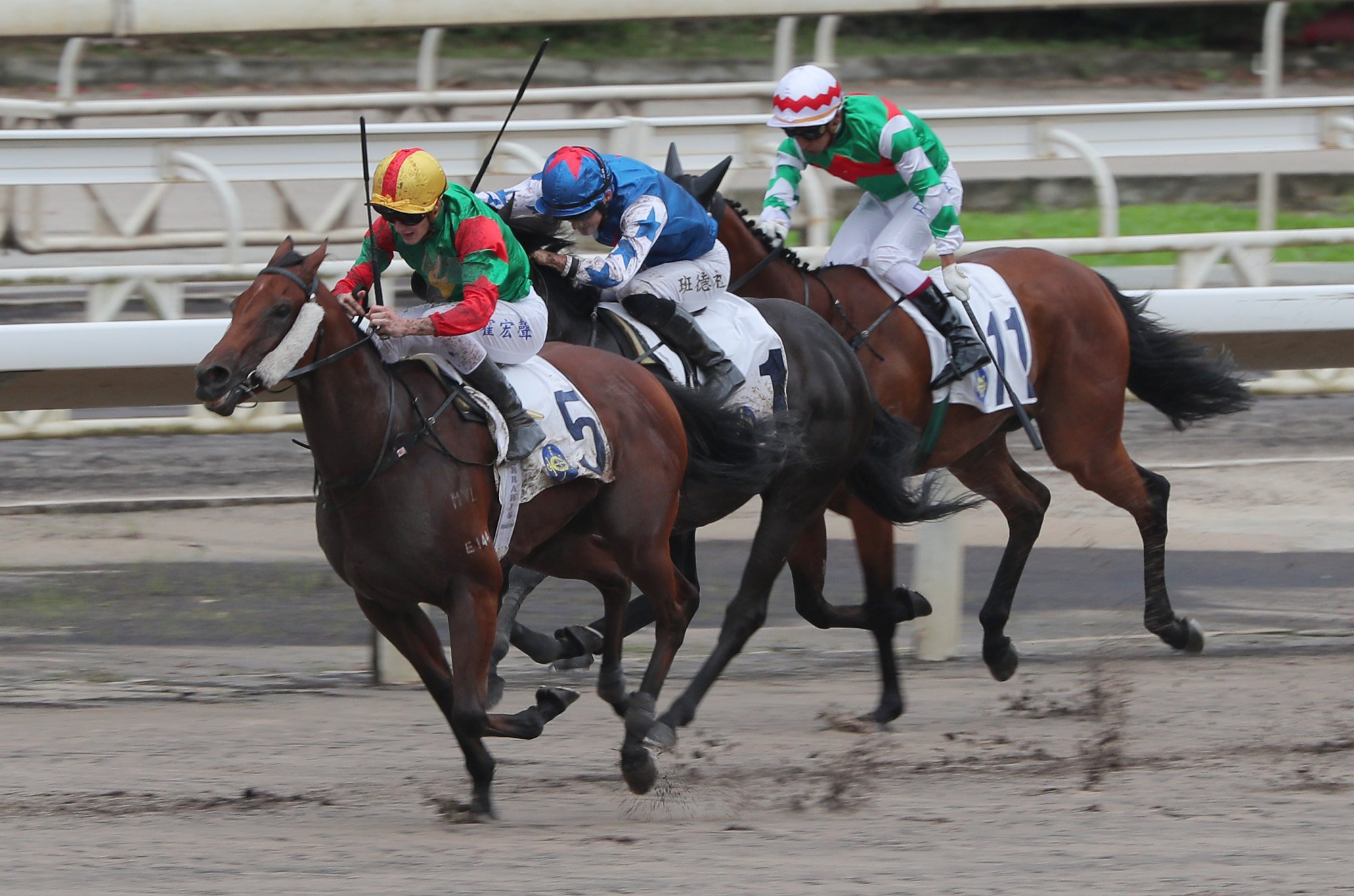Jockey Club stewards are “extremely hopeful” a new careless riding penalty system “will encourage much safer riding” during the 2023-24 season and beyond.
The new system, which will take effect from Sunday’s season opener at Sha Tin, will give discounts for good records, as well as the breaking down of a jockeys’ carelessness into three grades and the consequences of their actions into six sections.
Jockeys without a careless riding charge within their past 200 rides will be discounted a one-meeting suspension and a two-day fine, while those with only one indiscretion will get one meeting and a one-day fine shaved off their penalty.
Two charges within a rider’s past 200 mounts will see a deduction of a one-day fine, while three is neutral and anything above that sees riders receive additional penalties for a poor record.
 Jockey Club chief steward Marc van Gestel addresses the media at Sha Tin on Tuesday morning.
Jockey Club chief steward Marc van Gestel addresses the media at Sha Tin on Tuesday morning.
While the standard penalty recently has been two meetings with increasing fines added for continued careless riding, there has been no recognition of a rider’s good record.
“What we’ve tried to encapsulate this season is that if a jockey has a good record, that good record should be rewarded if they do have a charge issued against them for careless riding,” said chief steward Marc van Gestel, who saw careless riding penalties reduce after the introduction of a similar system in Australia.
“We think the new structure we are going to put in place should encourage jockeys to ride safely and maintain a good record,” Van Gestel added, confirming careless riding bans have been dropping in recent seasons anyway, down from 84 in 2020-21 to 73 in 2021-22 and 63 last season.
Carelessness will be graded as low, medium or high and consequences range from a one – a horse being unnecessarily crowded – to a six if a jockey causes multiple gallopers to fall.
Hong Kong racing is back, here’s what you might have missed in the off-season
Suspensions will range from zero days to eight and fines from one day to four, with fines calculated on a jockey’s average earnings per meeting capped at HK$60,000.
“We see that as being a fairer way of issuing penalties and it provides good transparency with the way we’re handing down the penalty and how it’s been calculated,” Van Gestel said.
Additional penalties may be applied in feature races and if riders take a “win at all costs” approach, while overseas-based jockeys riding in Hong Kong will have their record at home taken into account.
There will also be changes to the way stewards present their meeting incident reports in an attempt to spruce up what was previously a block of seemingly endless text, with horses listed in race-book order and accompanied by their silks.
 Hong Kong’s dirt surface has a new track rating.
Hong Kong’s dirt surface has a new track rating.
“This process will now have individual horses and the incident associated with that horse, providing a quick summary for those interested in looking at that particular horse,” Van Gestel said.
“It’s about trying to have customer centricity in terms of the way we publicise our racing incidents. It will provide a more user-friendly format for owners, punters, media and other stakeholders. We think it’s in line with more contemporary standards.
“We’re trying to crystallise the content of the report to ensure that it’s succinct, straight to the point and provides a clear outline as to what has occurred during the running of a race.”
Another development ahead of the 2023-24 season is the addition of a new track rating on the all-weather surface, with “sealed” going slotted in between slow and wet fast to “accurately describe a good track which is sealed, not harrowed and not being affected by rain yet”.
















